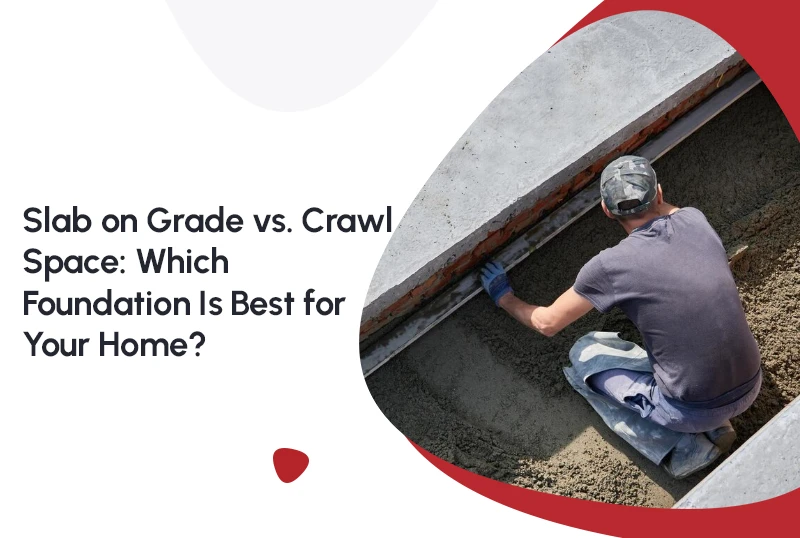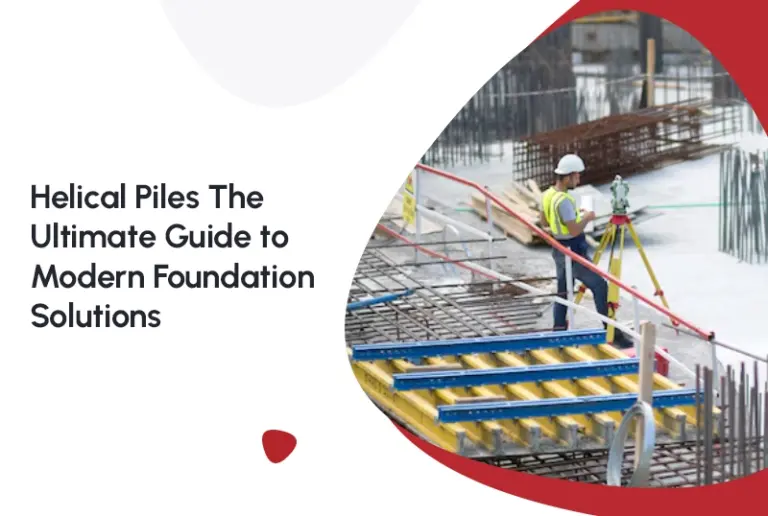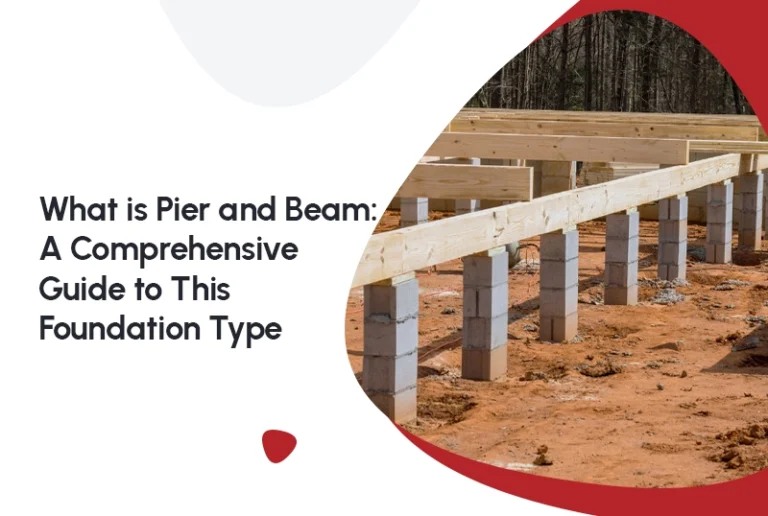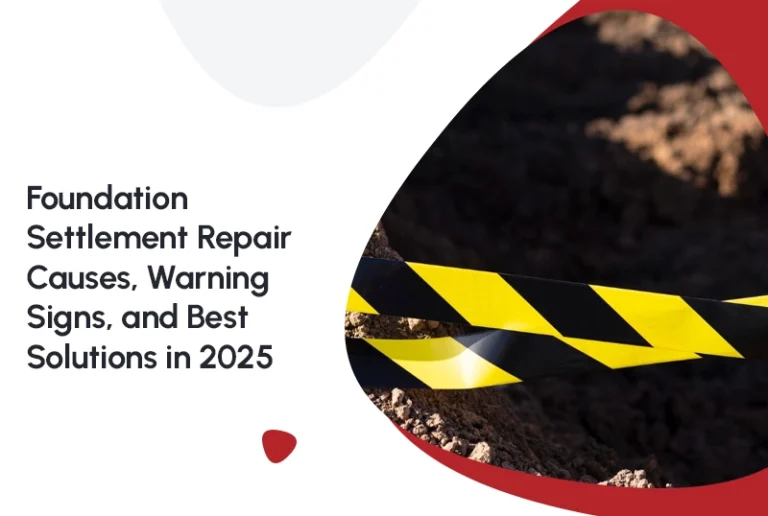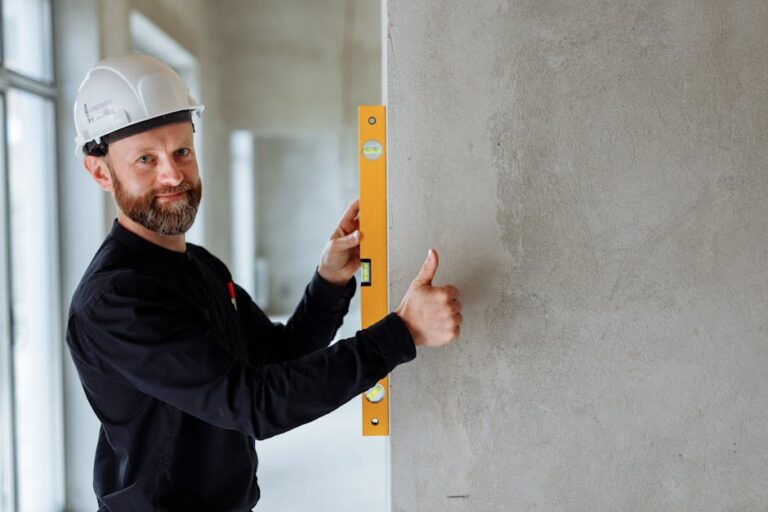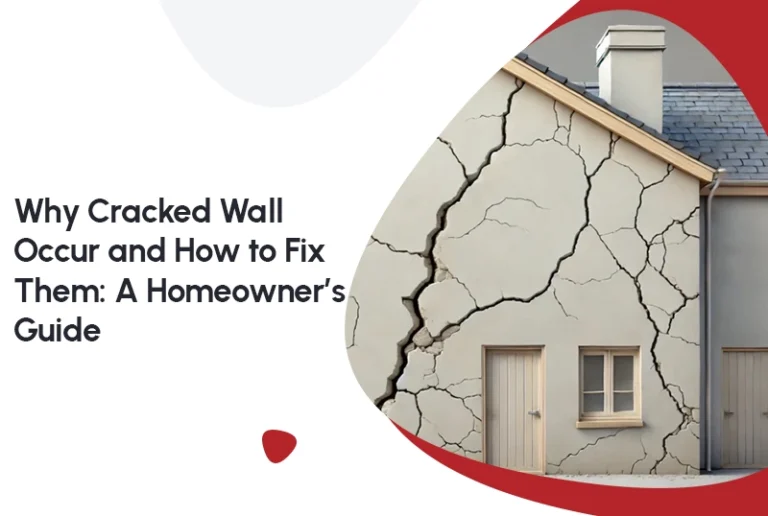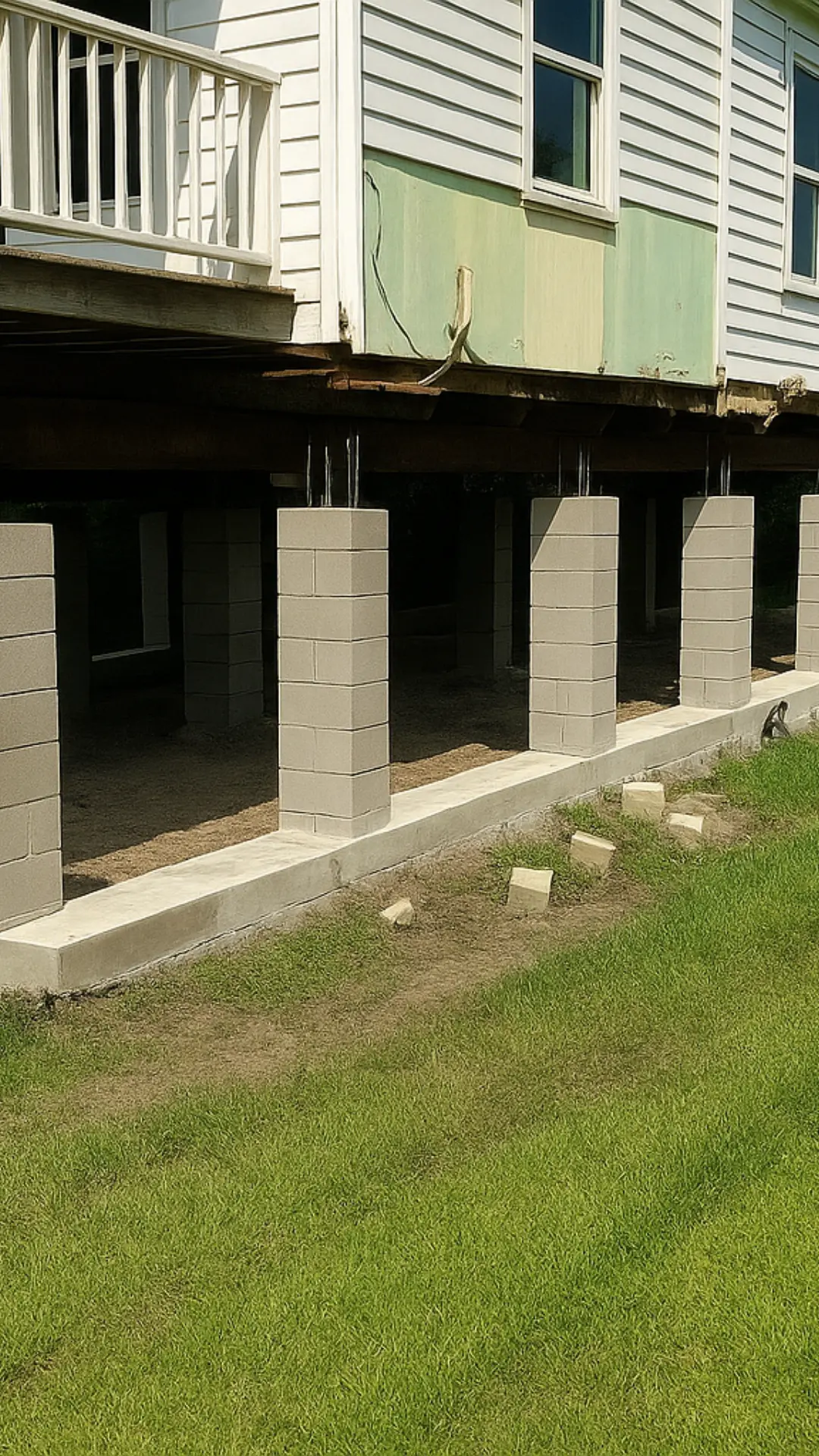Building a home is exciting—but choosing the right foundation? Not so much. Yet, it’s one of the most critical decisions you’ll make. Two common options stand out: slab on grade and crawl space foundations. But which one is right for your home?
Trust us: picking the right foundation can save you thousands in repairs, prevent sagging floors, and keep your home safe for decades. Let’s break it down in a fun, easy-to-understand way while pointing out the pain points you’ll want to avoid.
What Is a Slab on Grade Foundation?
Imagine pouring a solid, flat concrete floor that also acts as your foundation. That’s a slab on grade foundation. It’s usually reinforced with steel bars or mesh and sits directly on the ground.
Why homeowners love it:
- It’s quick to build, so your dream home rises faster.
- It’s cost-effective, saving both time and money.
- It’s durable with low maintenance, meaning fewer worries about rot, pests, or hidden leaks.
Potential headache: If water ever infiltrates your slab, you might need concrete slab foundation repair—expensive but preventable with proper care.
What Is a Crawl Space Foundation?
A crawl space raises your home slightly off the ground. Think of it as a tiny under-house attic for plumbing, wiring, and ventilation.
Why some homeowners pick it:
- Easy access to plumbing and electrical systems.
- Space for insulation and airflow.
- Elevates the home, offering minor protection against flooding.
But beware: Moisture can lead to water in crawl space, mold, and wood rot. If neglected, maintenance can become a recurring chore—and a costly one.
Key Differences Between Slab on Grade and Crawl Space
| Feature | Slab on Grade Foundation | Crawl Space |
|---|---|---|
| Cost | Lower; fewer materials and labor | Higher due to walls & waterproofing |
| Maintenance | Minimal; mostly crack checks | Moderate; must control moisture and inspect regularly |
| Access to Utilities | Limited; embedded in slab | Easy; pipes and wires accessible |
| Moisture Risk | Moderate; good grading prevents pooling | High if not properly sealed |
| Construction Speed | Fast | Slower; more labor-intensive |
| Repair Flexibility | Harder to fix cracks or settling | Easier for utility repairs |
Pros and Cons of Slab on Grade Foundations
Pros
Cost-Effective:
Slab on grade foundations use fewer materials and take less time to pour compared to crawl spaces or basements. This means lower upfront costs and fewer delays during construction—perfect if you want a budget-friendly build without sacrificing stability.
Low-Maintenance:
Once poured, there’s little to worry about. No hidden crawl spaces to inspect, fewer pests sneaking in, and no wooden beams to rot over time. Your home can stay strong and worry-free for years, making it ideal for busy homeowners.
Durable:
These foundations are built to last. With proper installation, they resist settling and cracking, providing a solid base for your home that can stand the test of time, even during heavy rain or minor ground shifts.
Cons
Limited Access to Utilities:
Plumbing, electrical, and HVAC lines are often embedded within the slab. So, if a pipe leaks or a wire fails, repairs can be messy and expensive, sometimes requiring cutting into the concrete.
Repair Challenges:
Large cracks, uneven settling, or damage from moisture may require concrete slab foundation repair, which can be costly and time-consuming compared to crawl space access.
Insulation Limitations:
Homes built on slabs may struggle with heat loss in colder climates. Additional insulation or radiant floor systems may be necessary to maintain comfortable indoor temperatures.
Pros and Cons of Crawl Space Foundations
Pros
Easy Utility Access:
With a crawl space, plumbing, electrical wiring, and HVAC systems are easily accessible. This means repairs, upgrades, or inspections are faster, cheaper, and less invasive—a huge advantage if your home’s systems require frequent attention.
Elevated Structure:
Raising your home a few feet off the ground provides natural protection against minor flooding and keeps moisture away from wooden floor structures. It’s especially useful in areas prone to seasonal rain or poor drainage.
Flexible Insulation:
Crawl spaces give you room to insulate floors and walls, improving energy efficiency. You can experiment with insulation materials, radiant heat systems, or even moisture barriers to create a cozier, safer home.
Cons
Higher Cost:
Building a crawl space requires extra materials (foundation walls, vents, supports) and labor. Add waterproofing measures to prevent moisture damage, and the overall cost can easily exceed a slab on grade foundation.
Moisture Risks:
Without proper drainage, ventilation, and vapor barriers, a crawl space can accumulate water. Water in crawl space leads to mold, wood rot, and even foundation damage over time—potentially resulting in expensive foundation repair or even tunneling to stabilize the foundation.
Ongoing Maintenance:
Crawl spaces require regular inspections, moisture monitoring, and occasional repairs. Ignoring this maintenance can turn a simple access advantage into a long-term headache.
Cost Comparison
Slab on Grade:
$4–$8 per sq. ft., depending on soil, slab thickness, and reinforcement.
Crawl Space:
$7–$12 per sq. ft., due to walls, ventilation, and moisture barriers.
If you want a low-maintenance, budget-friendly foundation, slab on grade is often the winner. But if your home requires utility access or better insulation, a crawl space might justify the higher cost.
When to Choose Slab on Grade
- You live in a region with stable soil and minimal frost risk.
- You prefer low-maintenance foundations.
- You want cost-effective construction.
- Your home is single-story.
When to Choose a Crawl Space
- You need frequent access to plumbing or electrical systems.
- You want to elevate your home to prevent minor flooding.
- You want flexible insulation options.
- You live in an area with soil movement or frost risk.
Pain Points to Watch
Even slab foundations have headaches: cracks, settling, and moisture intrusion can require under slab tunneling or foundation reinforcement. Crawl spaces may hide moisture problems, increasing maintenance and repair costs. Acting early prevents surprises and costly bills.
Maintenance Tips for Slab on Grade Foundations
- Ensure proper drainage around the home.
- Seal small cracks immediately.
- Inspect periodically for uneven settling.
- Add insulation in colder climates.
According to the National Association of Home Builders (NAHB), 72.4% of new single-family homes started in 2023 were built on slab foundations
Final Thoughts
Choosing between slab on grade and crawl space foundations is more than a design decision—it affects maintenance, repair costs, and your home’s safety. Slab foundations are cost-effective, durable, and low-maintenance, while crawl spaces offer utility access and insulation flexibility.
For professional guidance and installation, contact FNF Foundation. We’ve got the expertise to keep your home strong, dry, and safe. Don’t wait for cracks or moisture to become a nightmare—act now and protect your foundation today!
FAQs About Slab on Grade Foundations
1. What is a slab on grade foundation?
A slab on grade foundation is a single concrete layer poured directly on the ground, often reinforced with steel bars or mesh.
2. Is slab on grade cheaper than a crawl space?
Yes, slab on grade typically costs less due to lower labor and material needs.
3. Can slab foundations crack?
Minor cracks can appear due to settling or temperature changes. Proper repair prevents serious damage.
4. Are slab foundations suitable for all homes?
They work best for single-story homes in stable soil regions. Areas with shifting soil may require crawl spaces or piers.
5. How long does a slab on grade foundation last?
With proper construction and maintenance, it can last 50+ years.
